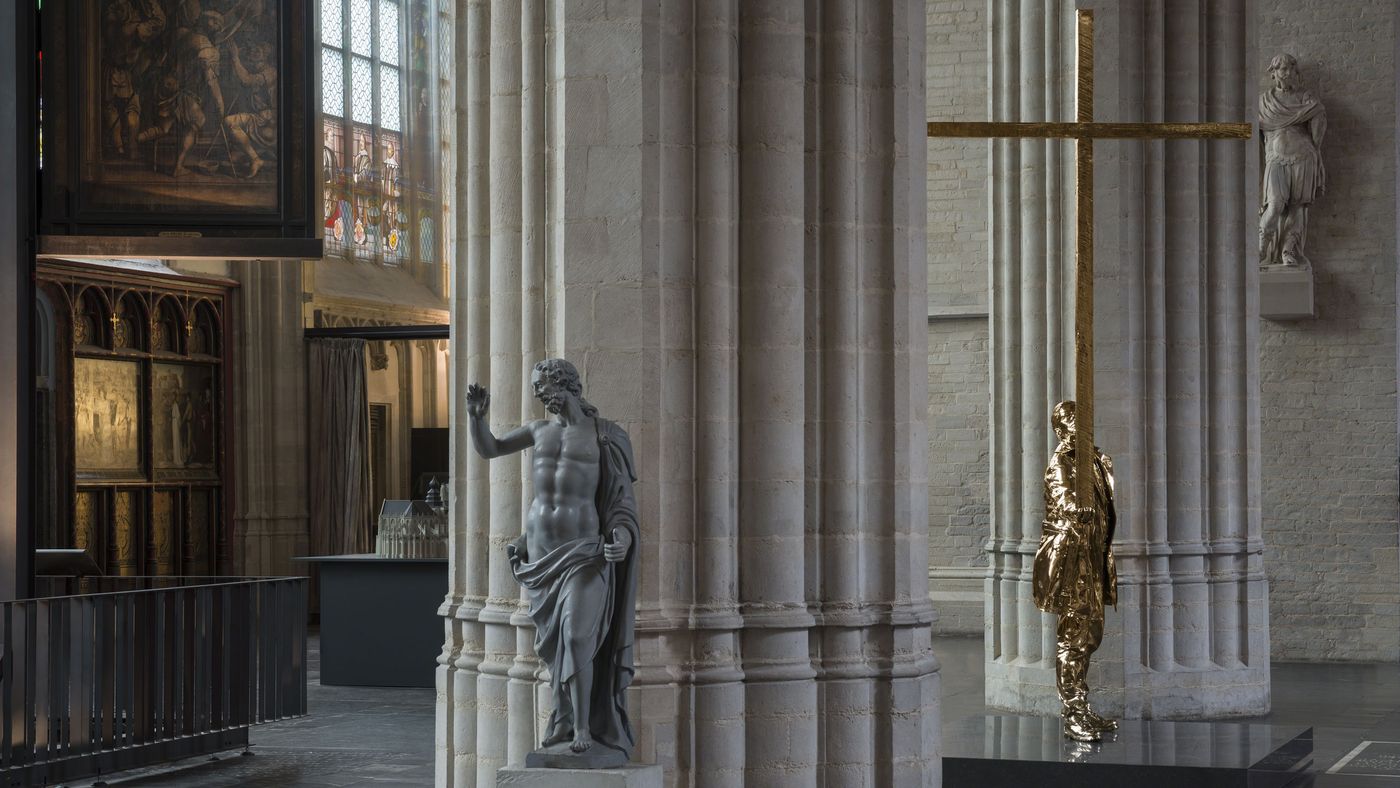
The Man who Bears the Cross: Inside the Creative Mind of Jan Fabre
Words by Evi Kallini
Location
Otegem, Belgium
The Man who Bears the Cross: Inside the Creative Mind of Jan Fabre
Words by Evi Kallini
Otegem, Belgium
Otegem, Belgium
Location
Famous Belgian multidisciplinary artist Jan Fabre demonstrates once again the timelessness of his art: the bronze sculpture “The Man who Bears the Cross" (2015) has officially become part of the Cathedral of Our Lady in Antwerp, facing —or even complementing— Flemish painter Peter Paul Rubens’ masterpiece, "The Descent from the Cross" (1611 - 1614), a monumental triptych crowning one of the cathedral’s altars.
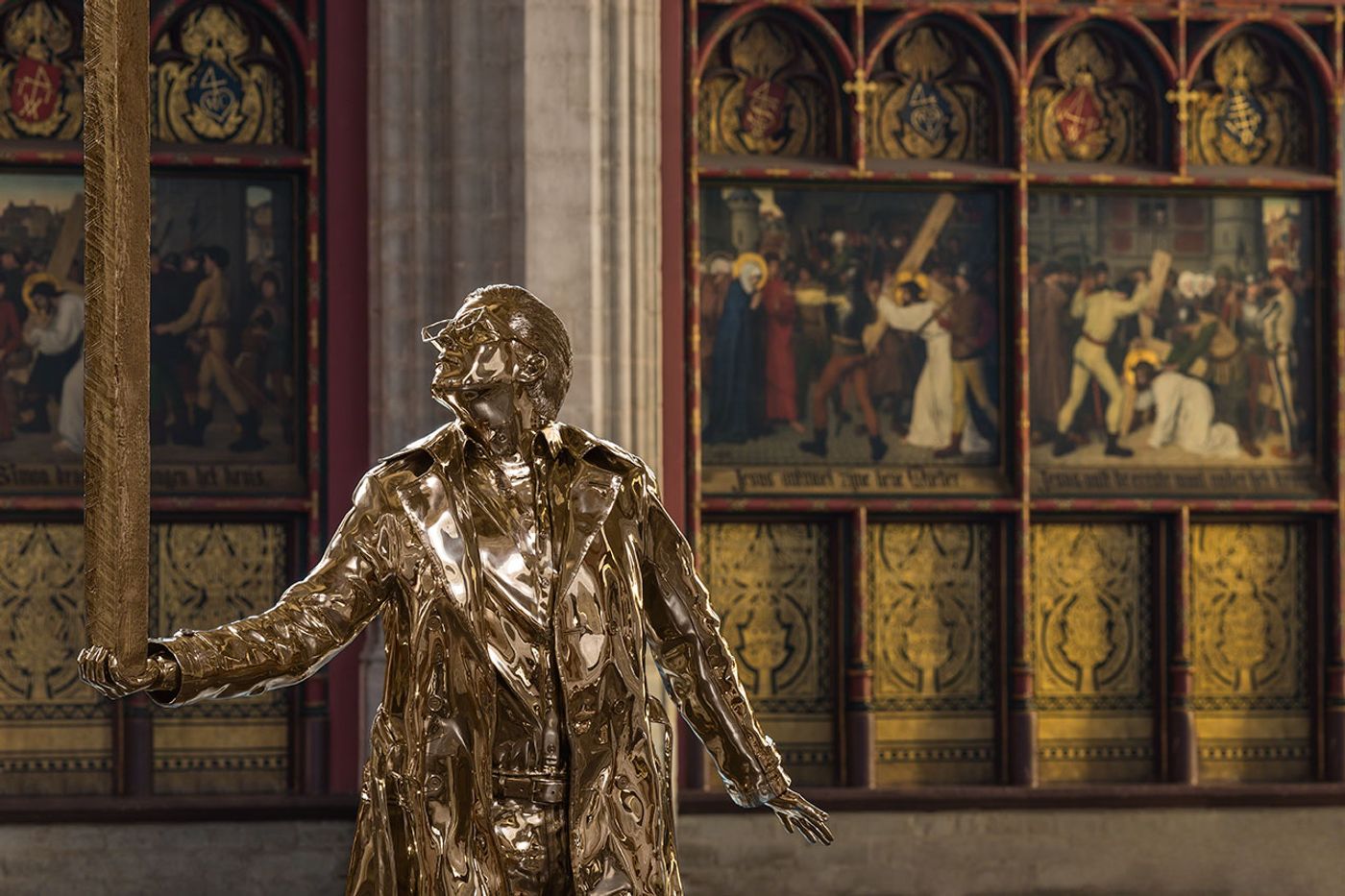
Jan Fabre, The Man who Bears the Cross (2015). Sculpture, permanently installed at the Cathedral of Our Lady in Antwerp, Belgium. Photo by Attilio Maranzano © Angelos bvba.
Throughout his creative path, the pioneer visual artist, theatre director and author has continued to be a tireless researcher who constantly questions his personal experiences through powerful images: “I think the sculpture reflects my identity as an artist, as a human, as someone who is searching, doubting, taking risks, choosing to experiment, asking questions”, he reveals in our conversation on the day of the artwork’s official inauguration. “When you look at my oeuvre, the cross is always there, and it is very important for different reasons. Don’t forget, when you think about visual arts purely, but also socially, you think about the virtual line that runs throughout the human race; people standing up, erect. And of course, you think of the horizontal, the landscape, you could say, the meeting of human and nature, as well as the cross as a kind of vitality: the tree of life”.
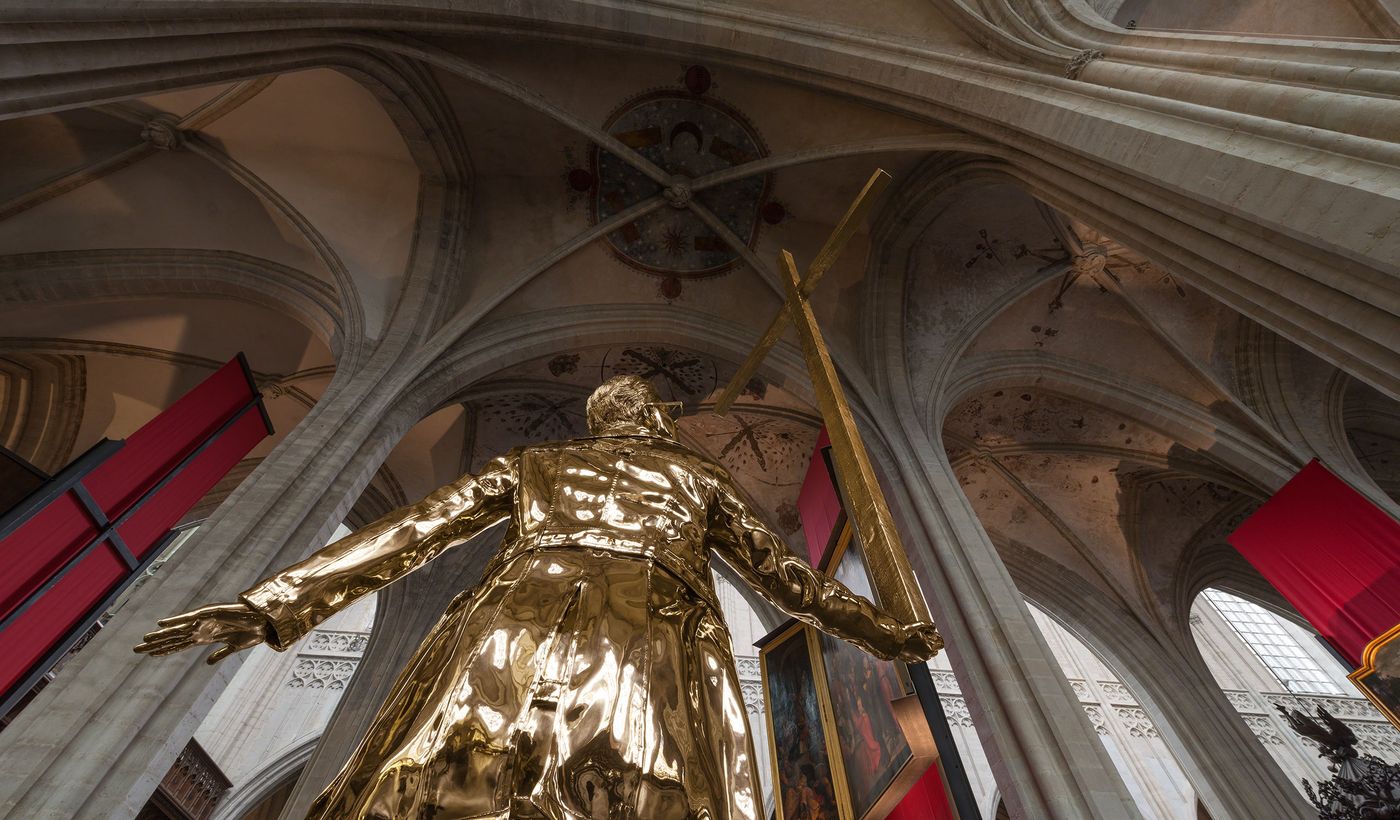
Jan Fabre, The Man who Bears the Cross (2015). Sculpture, permanently installed at the Cathedral of Our Lady in Antwerp, Belgium. Photo by Attilio Maranzano © Angelos bvba.
The sculpture’s face is a combination of Jan’s and his dead uncle’s, Jacques Fabre, who was a poet and an actor. But it is also the face of every man: what we see is an ordinary man bearing a cross, or rather handling it, since the man’s posture show that the cross is in fact light, and has nothing to do with the unbearable load associated with this symbol in the Catholic Church’s iconographic tradition. Inevitably, this antithesis could make some wonder as to whether “The Man who Bears the Cross” actually belongs in a church. “Undoubtedly yes”, says Bart Paepen, Parish Priest of the Cathedral. As he explains to me: “From the first moment I saw it, I was really touched by it. And I think it’s because the image that this sculpture presents is so direct, and gives the impression that is entirely true. In this work, truth and beauty touch each other. The sign of the cross of course is very central to our tradition; this combination of truth and beauty paired with our traditional iconographical language immediately made clear to me that this artwork had to come to the Cathedral”.
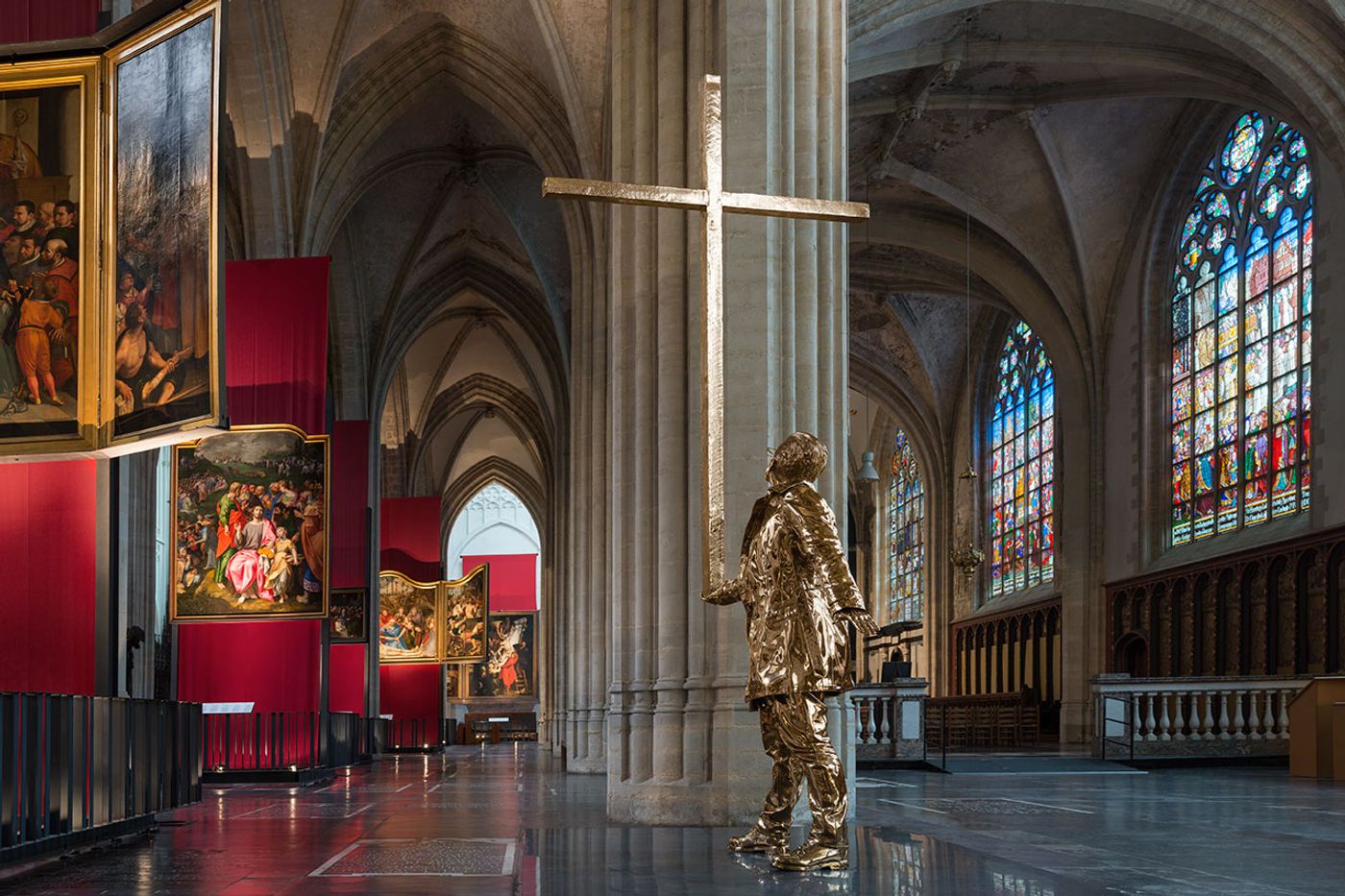
Jan Fabre, The Man who Bears the Cross (2015). Sculpture, permanently installed at the Cathedral of Our Lady in Antwerp, Belgium. Photo by Attilio Maranzano © Angelos bvba.
For Jan Fabre, this meeting of contemporary art and religion is all about openness: “It is very important that people from the church want to bring contemporary art back to the church. And believe me, it’s the right place for it. In my life I have only come across two places, church and museum, where there is no power of economics involved. The fact that we are doing this together is a very important act to the outside world”. I personally couldn't agree more.

Jan Fabre, 30 Years-7 Rooms. Exhibition view, Room II – The Hour Blue © Deweer Gallery, Otegem Belgium, 2015.

Jan Fabre, 30 Years-7 Rooms. Exhibition view, Room II – The Hour Blue © Deweer Gallery, Otegem Belgium, 2015.
At the same time that the sculpture is officially being inaugurated at the Antwerp Cathedral, Belgian gallery Deweer is showcasing the major retrospective “Jan Fabre – 30 Years / 7 Rooms”. This unique exhibition festively celebrates thirty years of collaboration between Jan Fabre and Mark Deweer, a visionary, passionate gallerist who foresaw the artist’s genuine talent and creative genius during the early days of his career. The exhibition extends over all the exhibition spaces of the gallery, which is located in Otegem, a village in the beautiful countryside, approximately half an hour away from Brussels. The exhibition is divided into seven themed rooms and presents the most important groups of works in Fabre’s oeuvre in a unique dramaturgy, created specially by the artist. Using all of the gallery’s available surfaces— floors, walls, the roof and even the basement— the artist staged his works in such a way that the visitor can actually enter his creative mind.
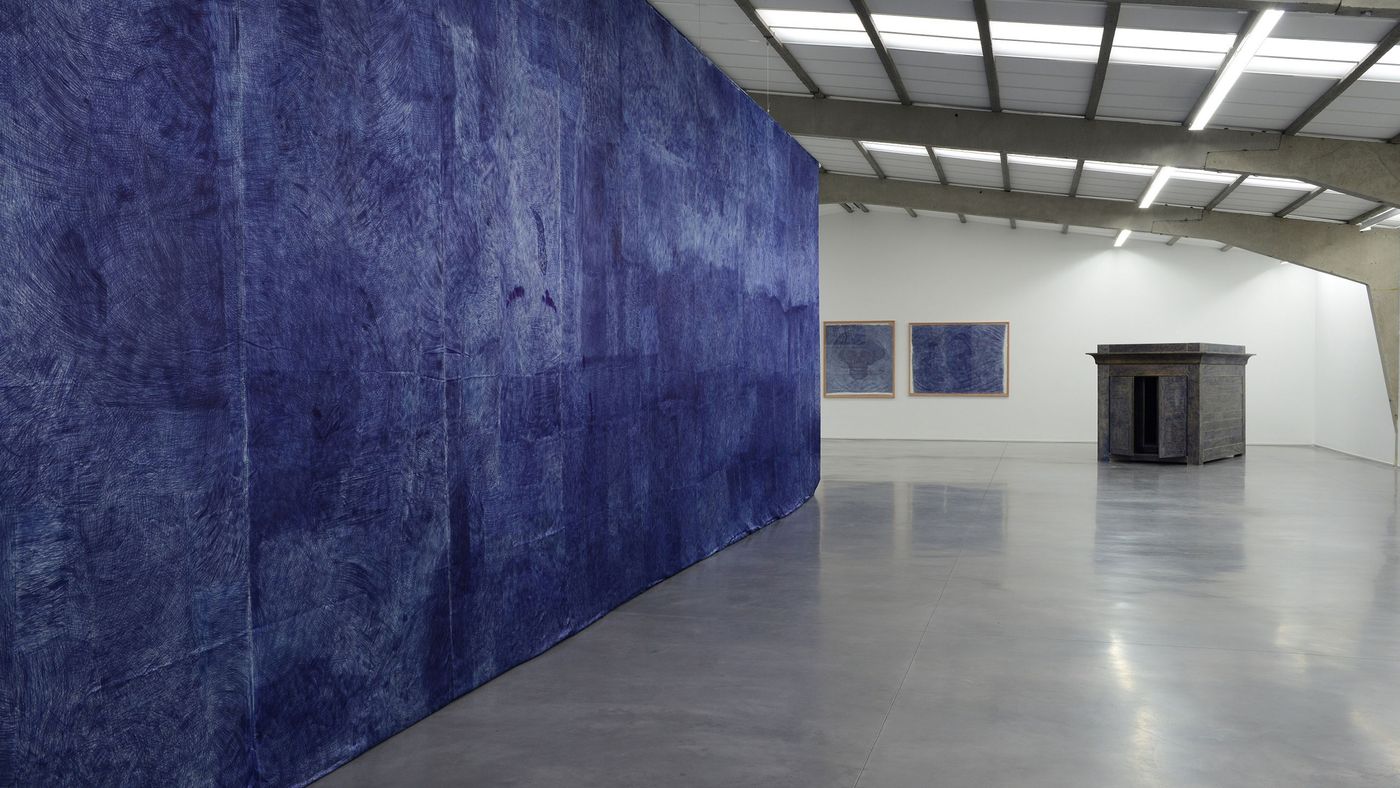
Jan Fabre, 30 Years-7 Rooms. Exhibition view, Room II – The Hour Blue © Deweer Gallery, Otegem Belgium, 2015.
Presented in the middle of the gallery’s lobby, “Room I – Brainhearts” presents Fabre’s latest sculpture “The Brain as a Heart, the Heart as a Brain” (2015) which is carved from Carrara marble, the same marble used by Michelangelo. With this magnificent sculpture, which impresses with its size, the visionary artist brought together, in a single work, the symbols of reason and feeling: the brain and the heart. In the following section, “Room II – The Hour Blue”, the visitor can admire one of Jan Fabre’s most famous groups of work, dating from between 1977 and 1991: referring to the particular colour of the sky between day and night. Comprised of drawings, the Hour Blue series were made by Fabre using a blue Bic ballpoint pen on different materials, such as paper, canvas, glass and wood.
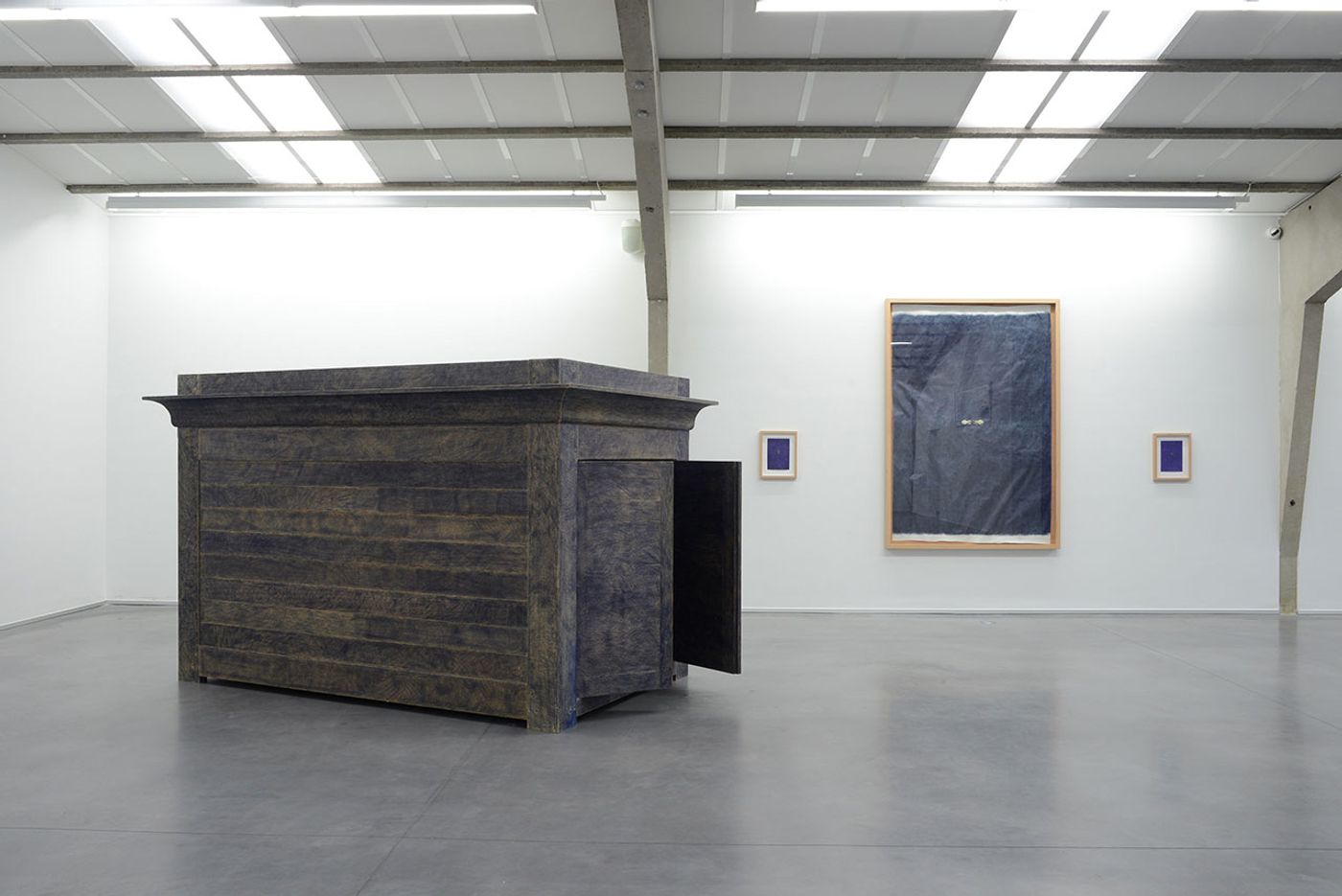
Jan Fabre, 30 Years-7 Rooms. Exhibition view, Room II – The Hour Blue © Deweer Gallery, Otegem Belgium, 2015.

Jan Fabre, 30 Years-7 Rooms. Exhibition view, Room I – Brainhearts © Deweer Gallery, Otegem Belgium, 2015.
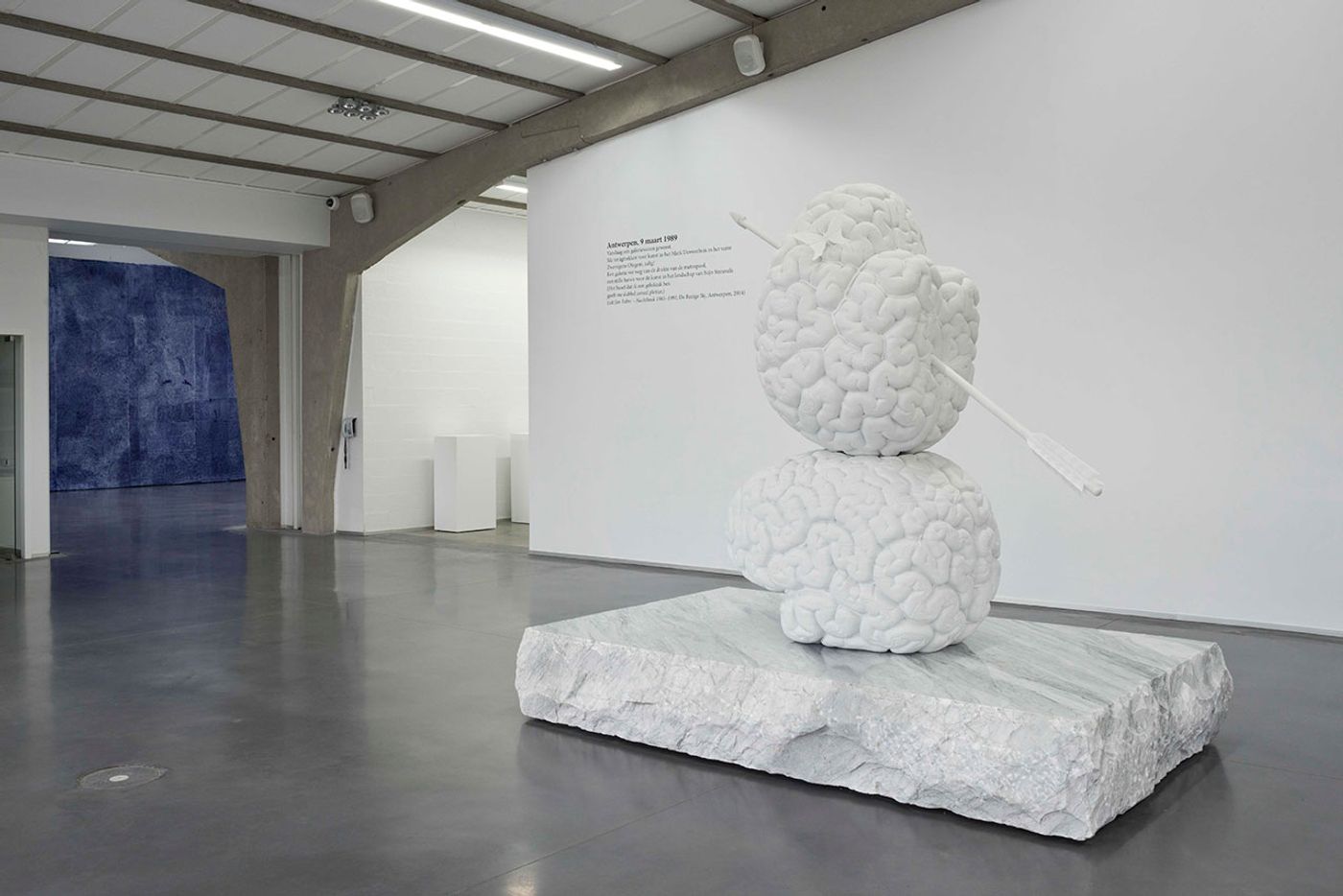
Jan Fabre, 30 Years-7 Rooms. Exhibition view, Room I – Brainhearts © Deweer Gallery, Otegem Belgium, 2015.
More recent works follow in the rest of the exhibition’s sections, starting with the Shelter-studios encountered in Room III, which are models and installations inspired from Fabre’s recollections of personal contacts with seven Chilean illegal immigrants (1992 & 1993 – 2008). In “Room IV – Offerings to the God on Insomnia”, the artist presents an ensemble of new eye-sculptures, a theme that Fabre introduced during his 2008 exhibition at the Louvre Museum reflecting the fact that the artist suffers from insomnia. The following fifth room reveals “a place in the shadow away from the world, to think and work” where the impressive, powerful installation “Umbraculum” (2001) is a reference point in the artist’s work revealing his personal philosophy about life and death. Finally, “Room VI – Is the Brain the Most Sexy Part of the Body?” hosts the important theme of the brain as terra incognita while “Room VII – A Meeting Vstrecha” presents the results of collaboration (drawings, sculptures and a movie) between Jan Fabre and the Ukrainian artist Ilya Kabakov in the late 90s.
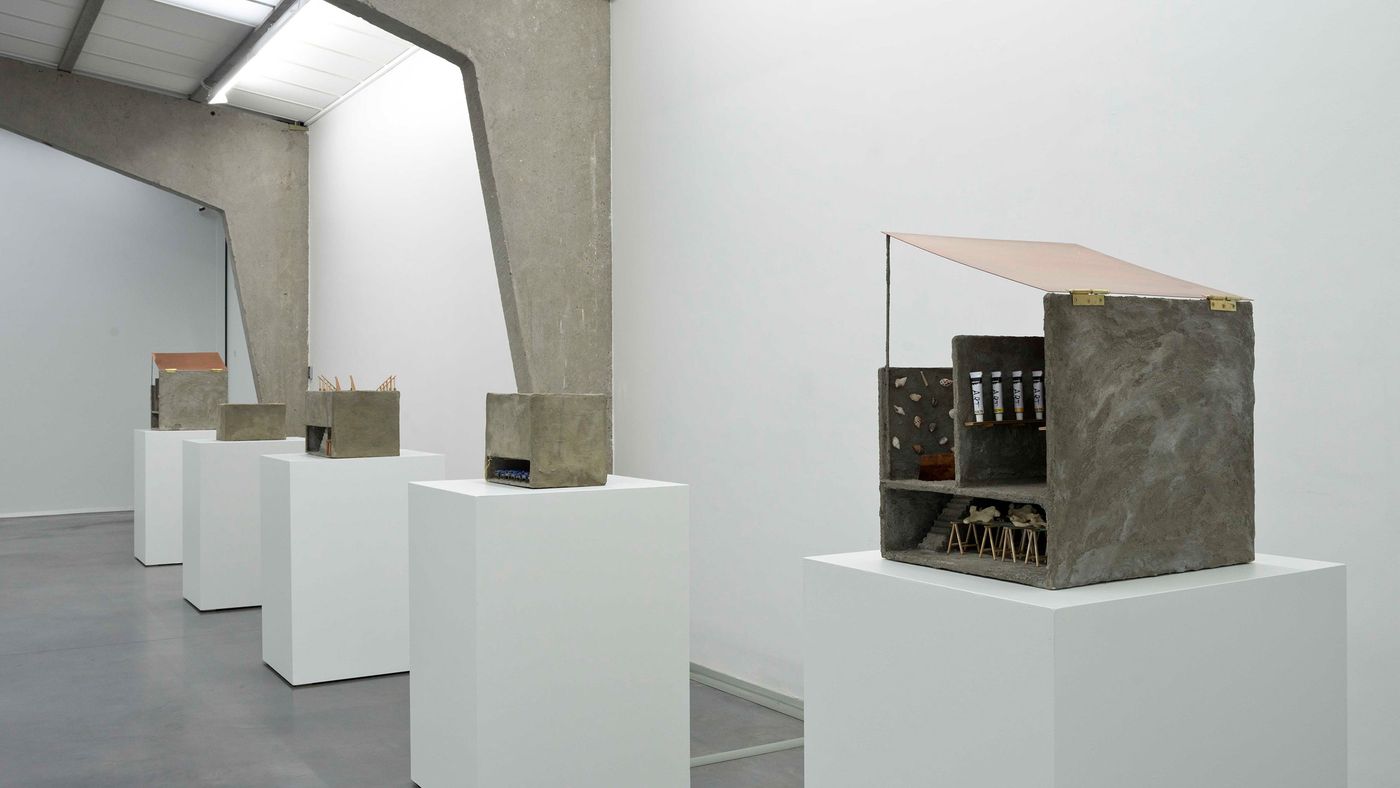
Jan Fabre, 30 Years-7 Rooms. Thinking models for Shelter-studios © Deweer Gallery, Otegem Belgium, 2015.

Jan Fabre, 30 Years-7 Rooms. Exhibition view, Room IV – Offerings to the God of insomnia © Deweer Gallery, Otegem Belgium, 2015.
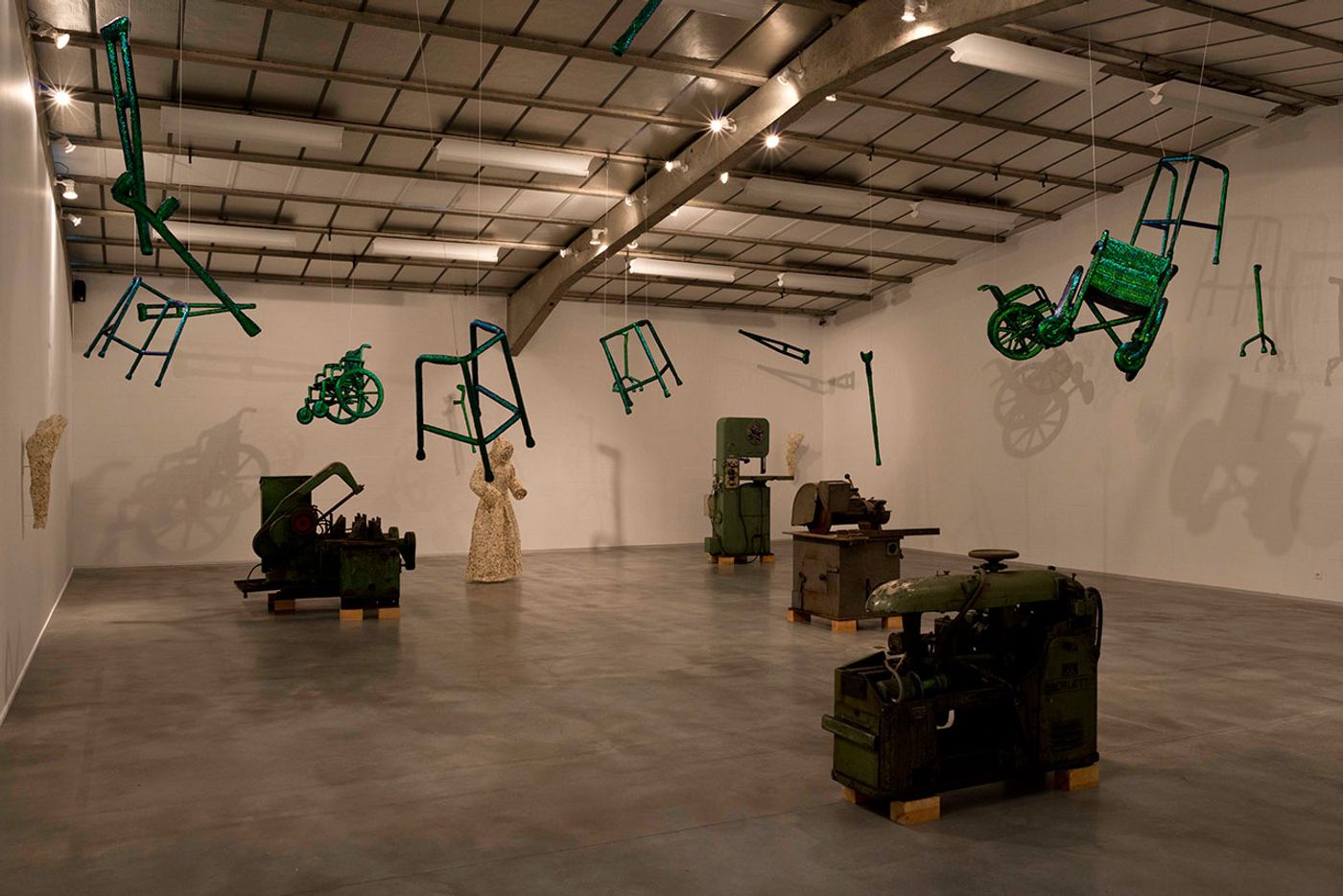
Jan Fabre, 30 Years-7 Rooms. Exhibition View, Room V – Umbraculum © Deweer Gallery, Otegem Belgium, 2015.

Jan Fabre, 30 Years-7 Rooms. Exhibition view, Room VII – A meeting/Vstrecha © Deweer Gallery, Otegem Belgium, 2015.

Jan Fabre, 30 Years-7 Rooms. Exhibition view, Room VII – A meeting/Vstrecha © Deweer Gallery, Otegem Belgium, 2015.
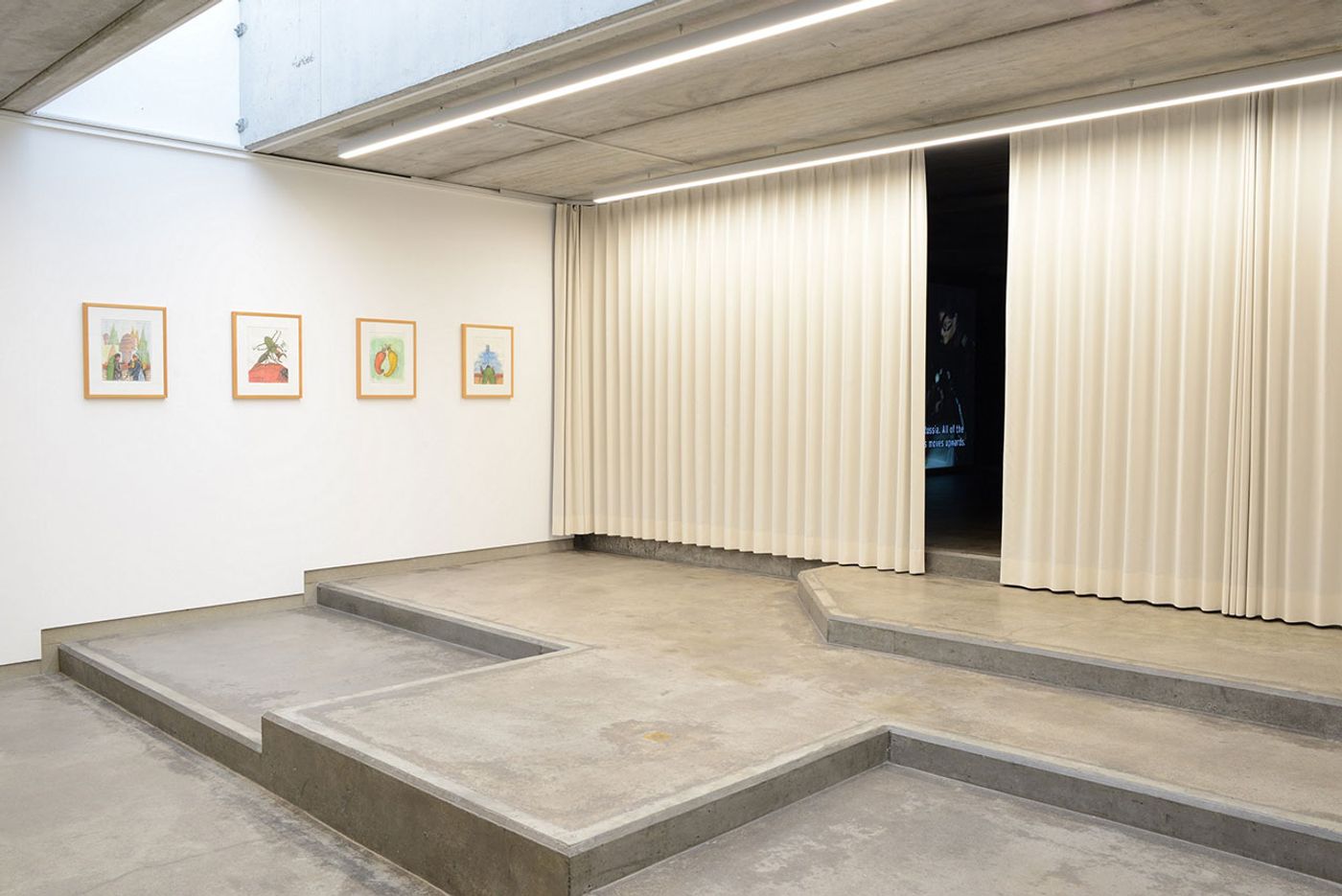
Jan Fabre, 30 Years-7 Rooms. Exhibition view, Room VII – A meeting/Vstrecha © Deweer Gallery, Otegem Belgium, 2015.
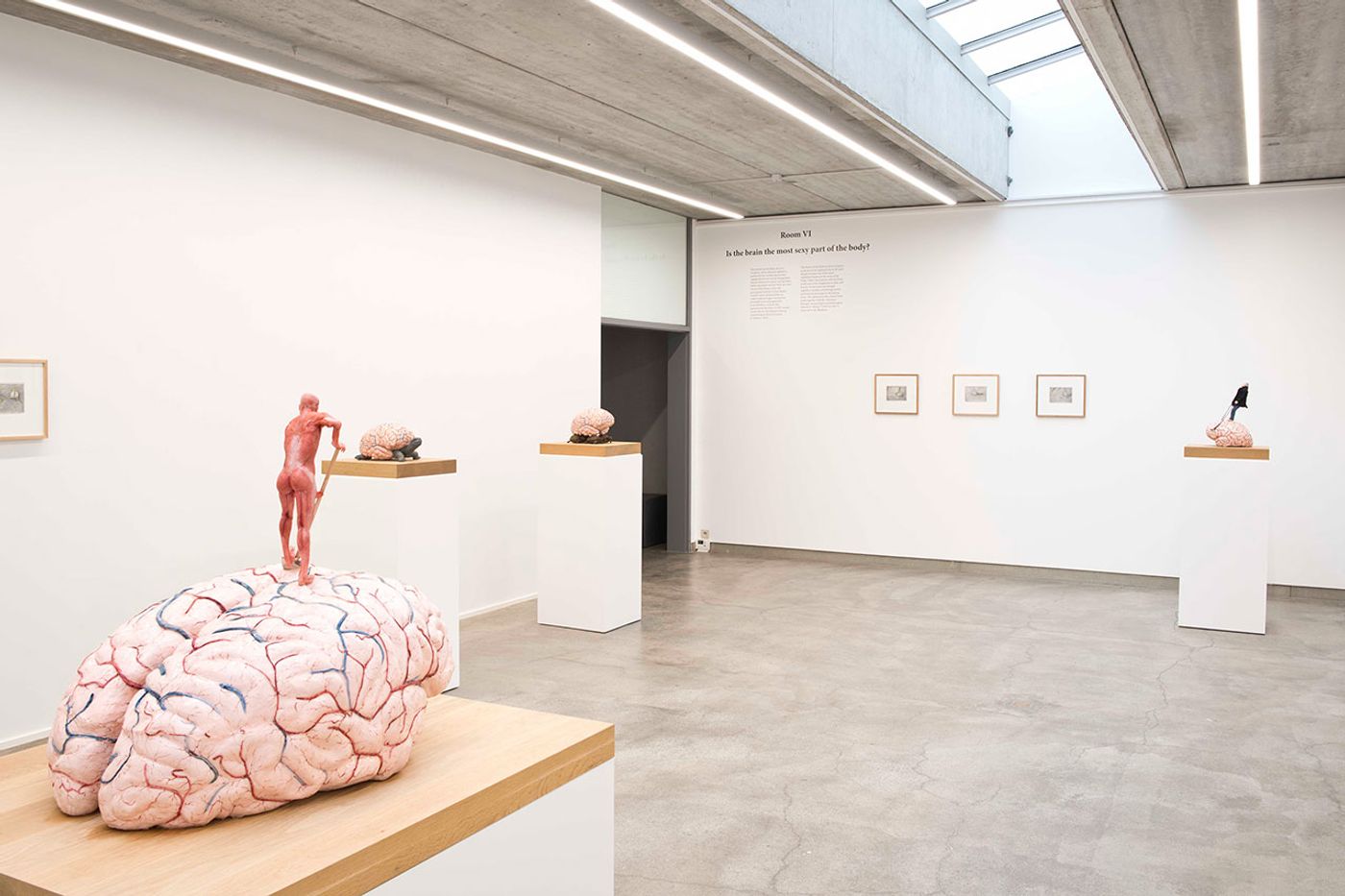
Jan Fabre, 30 Years-7 Rooms. Exhibition view, Room VI – Is the brain the most sexy part of the body? © Deweer Gallery, Otegem Belgium, 2015.
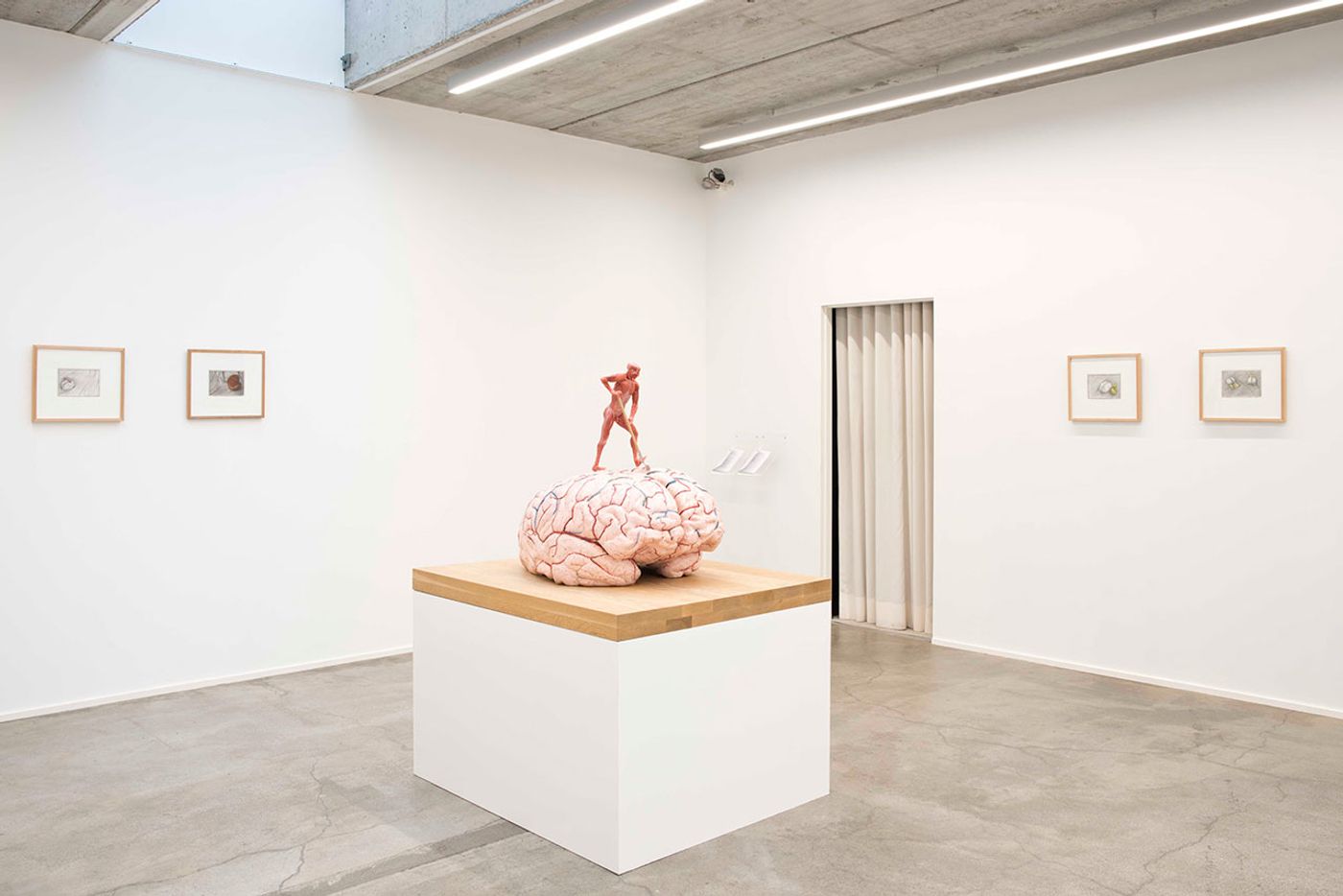
Jan Fabre, 30 Years-7 Rooms. Exhibition view, Room VI – Is the brain the most sexy part of the body? © Deweer Gallery, Otegem Belgium, 2015.